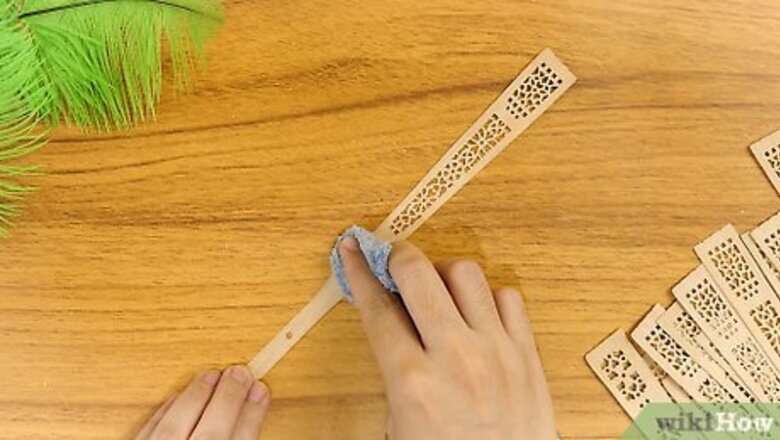
views
Decorating the Staves
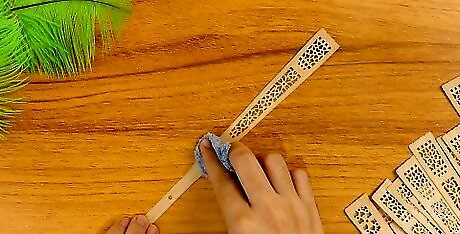
Clean the rhinestone inlay holes. If the staves you use have specific indentations for rhinestone gems, clean them thoroughly using a cotton swab dipped in isopropyl alcohol. Wipe away any residue using the dry side of the cotton swab or a clean, dry rag. This process removes any debris that could interfere with the effectiveness of the glue you'll be using later on. If the staves do not have specific inlay holes, you should still clean the general areas you plan to place the stones. Note that rhinestone decorations are only optional. Skip this section if you choose not to use them.
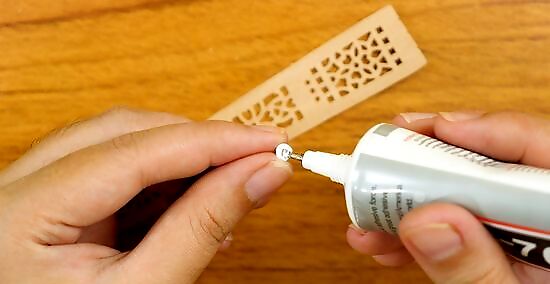
Apply glue to the back of one stone. Use a toothpick to apply a dab of glue to the back of one rhinestone gem. You may need to hold the stone with tweezers as you apply the glue to prevent the adhesive from sticking to your skin. Five-minute epoxy is a good choice, but any super glue should work.
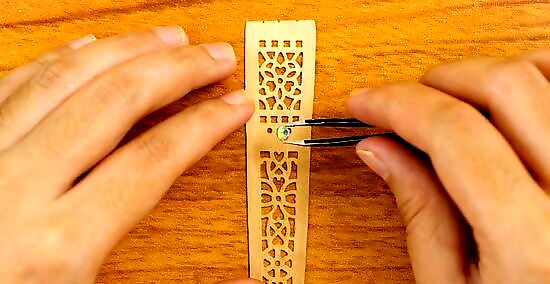
Adhere the stone to the stave. Place the stone, glue-side down, on one of the cleaned inlays. Gently press down on the stone so that the adhesive sticks securely to the stave. Wait until the glue dries before continuing. If the staves you use do not have specific inlay holes, you will need to determine where to place each gemstone before applying it. The stone should be able to stick to any position on the stave, though.
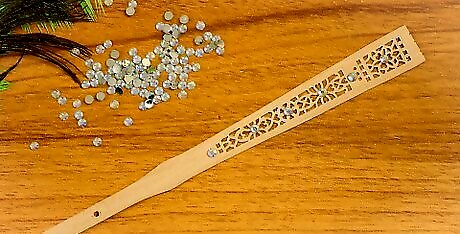
Repeat with the remaining stones. Apply glue to the back of each rhinestone gem, then place each gem on a separate inlay hole along the stave. Typically, each stave has six gemstone inlays.
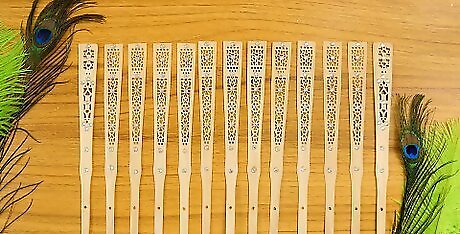
Repeat with each stave. Repeat the process for each stave until all 12 staves are decorated with rhinestones. Let everything dry before continuing. If the staves do not have separate rhinestone inlays, you will need to measure out the space in between each stone on your first stave and repeat these precise measurements on each stave that follows.
Attaching the Feathers
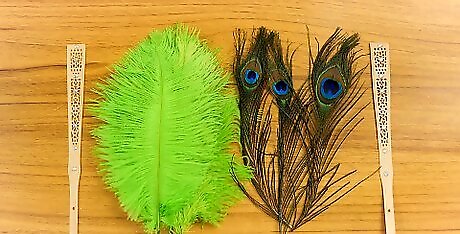
Trim the feathers. Each feather must be equal in length to each stave, and the feathers must be equal in length to one another. Use a yardstick to measure the staves and feathers. Make sure that the quill portion of each feather can extend all the way down the bottom set of double holes on the stave. If the quill is too long, trim it with heavy scissors until it reaches an appropriate length. Note that the feathers should be at least 4 inches (10 cm) wide and 18 inches (46 cm) long.
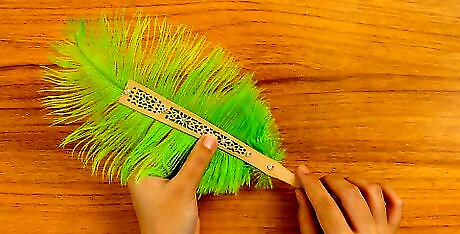
Hold the feather and stave together. Hold one stave together with one feather. The quill of the feather should be positioned on the back (undecorated) side of the stave. The feather should curl downward when held with the stave on top. Make sure that the feather plume hangs down over the squared end of the stave. The stave end marked by a single hole should fall below the quill of the feather and in the opposite direction of the feather plume.
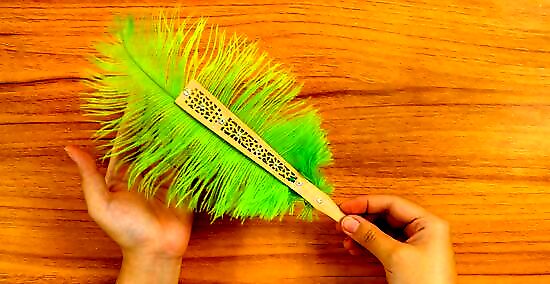
Tie the feather in place with a cable tie. Locate the lowest set of double holes in the stave. Insert a small cable tie through one of these holes from the back, then loop it all the way around both the stave and the feather. Ideally, the color of the cable tie should match the color of the stave. Some staves have more than two sets of double holes. If the quill of the feather does not extend down to the lowest set of double holes, you can thread the cable tie through a higher set. Make sure that you can use at least two separate sets of double holes per feather and stave, however. Close the cable tie over the feather side. Make sure that you have closed it as tightly as possible so that the feather does not slip out. Thin wire or v-shaped wires can be used instead of cable ties, if desired. Use pliers to twist the wires closed at the feather side of the stave.
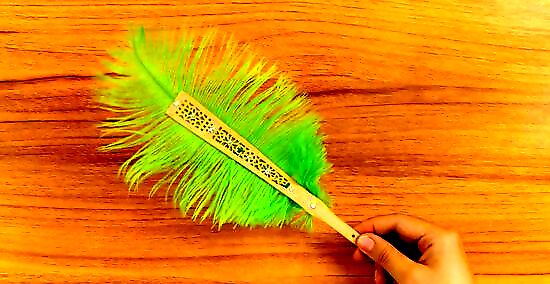
Secure with a second cable tie. Loop a second cable tie around the feather and stave inside the top set of double holes. As before, you should close the cable tie as tightly as possible over the feather side of the stave.
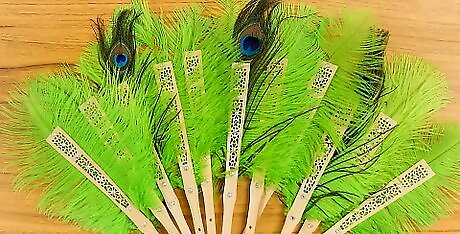
Repeat with the remaining staves. Line up one feather with each stave and secure the two together with two cable ties. When finished, you should have 12 identical feathered staves. Use heavy scissors or side cutters to trim the end of each cable tie.
Linking the Staves Together
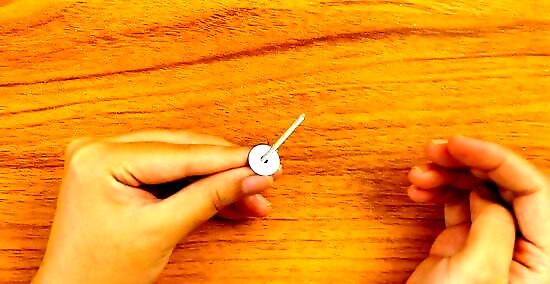
Slide a washer onto the bolt. Slide one washer onto a long bolt, slipping it all the way down to the head of the bolt. The exact size necessary will vary depending on the thickness of each fan stave, but generally, a 3-inch (7.6-cm) bolt will work well.
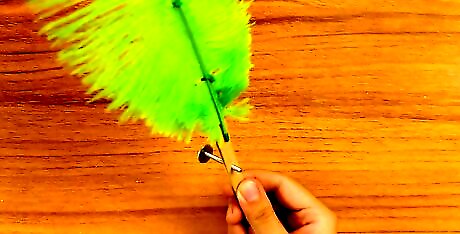
Place the first stave. Locate the single hole at the base of the stave. Insert the bolt through this hole so that the decorated rhinestone side of the stave faces the head of the bolt. The feathered side of the stave should face up and away from the bolt head.
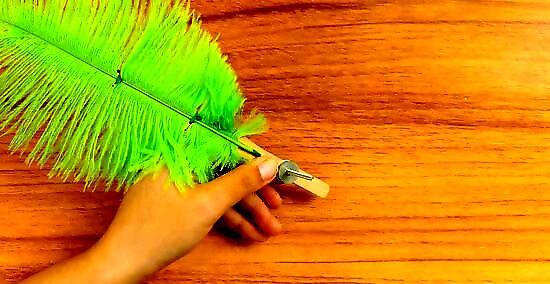
Alternate staves and washers. Place the remaining staves on the bolt, sliding two washers in between each pair of staves. Make sure that there is at least one washer at the end of the bolt following the twelfth and final stave. All staves should face the same direction on the bolt. If there is a considerable amount of excess space at the end of the bolt, you can add more than one washer to the end following the final stave. For the sake of consistency, you may wish to add a few extra in between the bolt head and the first stave, too. Doing so will require you to remove all of the washers and staves on the bolt and redoing the construction from scratch.
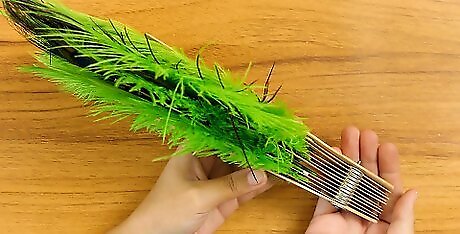
Attach the locking nut. Using your fingers, screw a hexagonal locking nut onto the end of the bolt, following the final stave and final washer.This locking nut will hold the construction together. You may need to use a pair of pliers to hold the nut while using a screwdriver to tighten the bolt into it. A tight fit will allow the fan to stay open more securely, but a loose fit will make it easier to open and close your fan. You may need to experiment a bit with the tightness of the locking nut until the staves reach the level of tension you desire.
Finalizing the Stave Positions
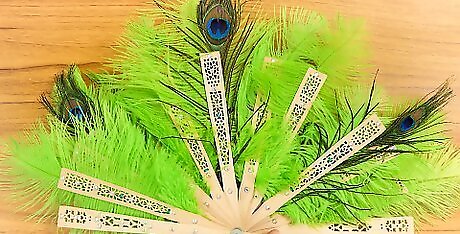
Spread out the fan. Lay the fan down on your working surface and spread the staves out equally. Continue spreading out the fan until the staves form a semicircle with a rotation in between 90 and 180 degrees. Make sure that the staves are all positioned at an even distance apart from one another.
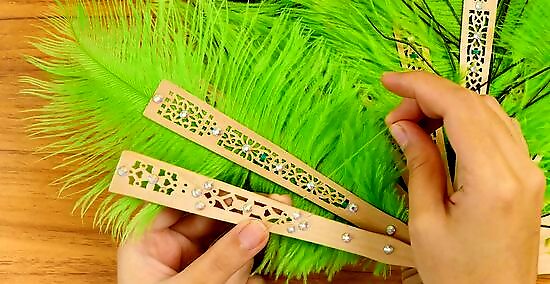
Thread fishing line through the first stave. Locate lowest pair of double holes in your first stave. Insert a long piece of nylon fishing line through the right hole of this set and securely knot it in place. Cotton twine and embroidery floss will also work. The string should either be transparent or should match the color of the staves.
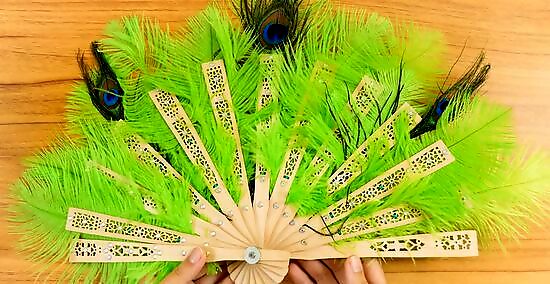
Thread the fishing line through the remaining staves. Weave the nylon line through the matching hole of each stave, knotting it around the side of each hole before continuing to the next one. Continue until all 12 staves are strung together. This nylon line will hold the "open" position of the fan, preventing it from opening any further than this.
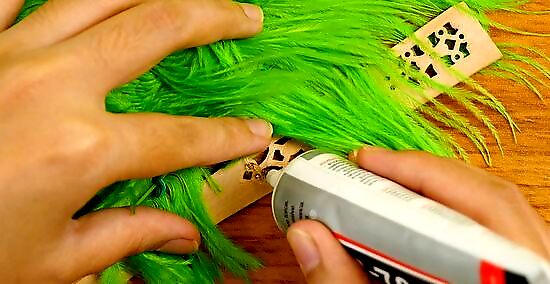
Secure the start and end knots. Consider placing a small bead of super glue on the first and final knots in your nylon line to help keep the knots secure. Keep the glue on the nylon line itself. If you get glue on the stave, it could create an unappealing mark or smear. Let the glue dry before continuing.
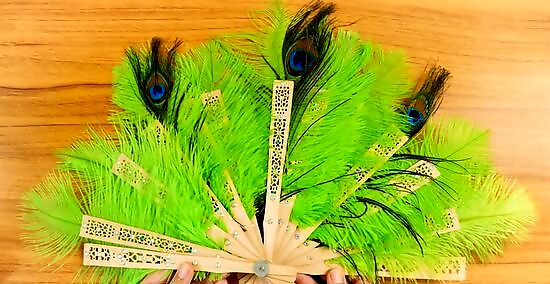
Test the fan. Open and close the fan a few times. If it works properly, the project is complete. If the fan does not close completely, you may need to undo the nylon line and try tying it on again, leaving more space in between each separate stave this time.













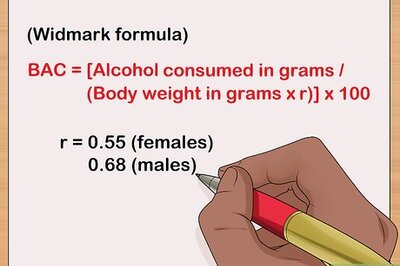

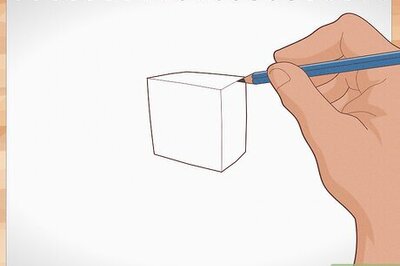

Comments
0 comment